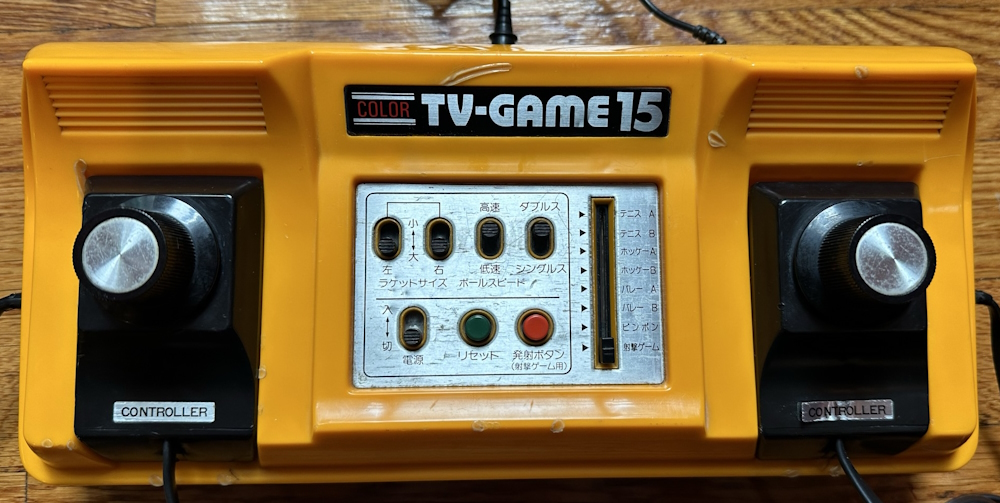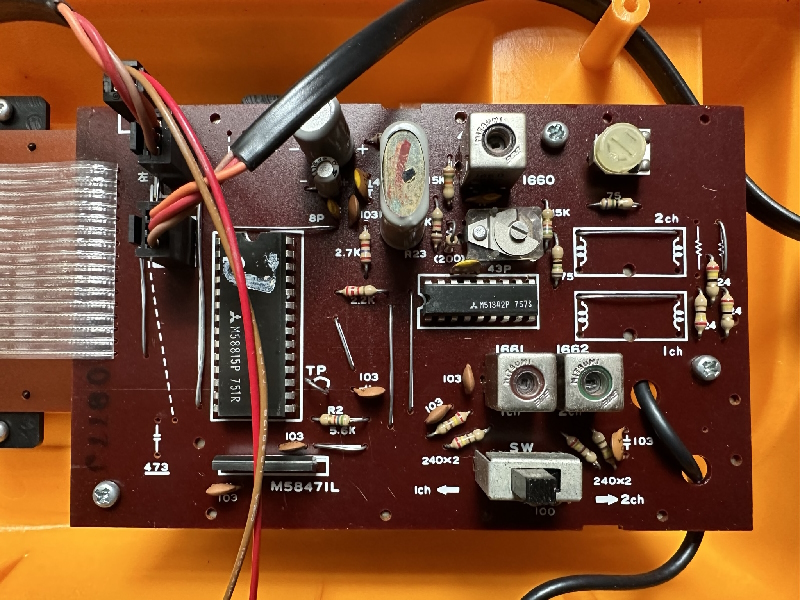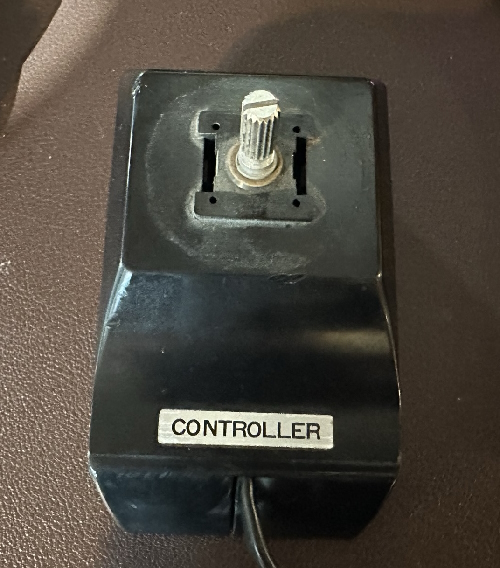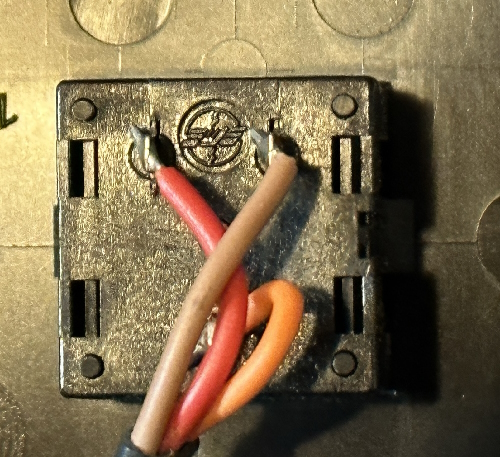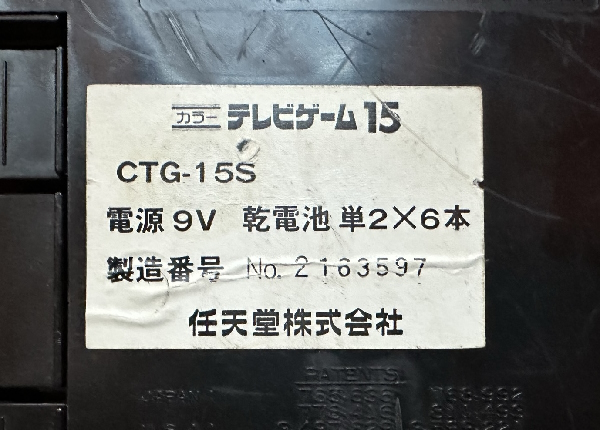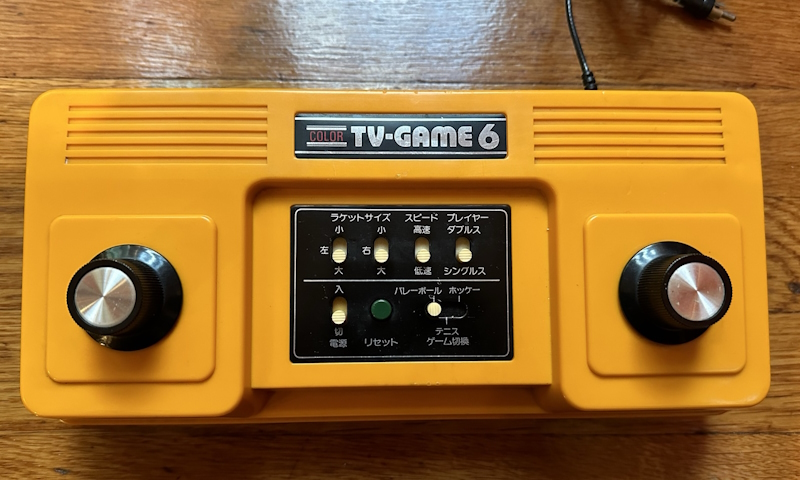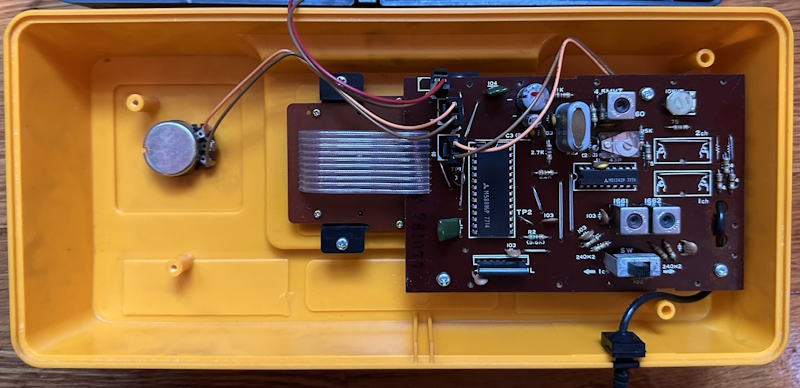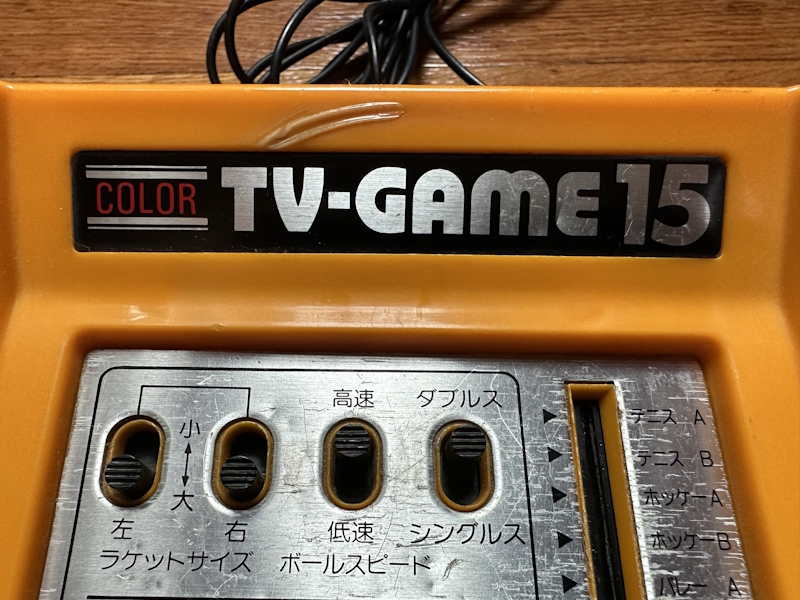First is the Worst: Nintendo's Color TV Game 6 & 15
If you told Yamauchi Fusajiro that the little playing card business he had just started would one day sell video game consoles, he would have no idea what you were talking about. It was 1889, after all. But nevertheless, that’s exactly what happened, and today everyone knows the name Nintendo. But what you might not know? A particular pair of Pong clones from the spunky little Kyoto folks– their first consoles– are the worst Pong clones of the bunch. Why? And did they fix it?
The rapid history
When I say the Color TV Game series lacks as a video game console, we need to look at the competition is doing. Obviously the Color TV Game doesn’t even compare to the Turbo Duo, but outside of maybe a very lucky thrift store visit, no one is really going to be deciding between these two systems. Behold, a whirlwind tour of the history of Pong consoles.
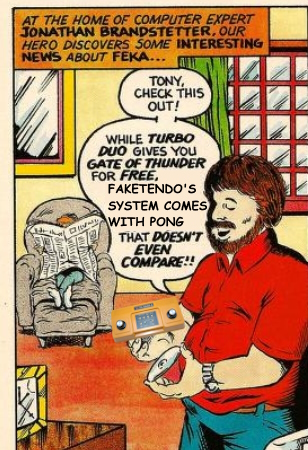
Atari’s arcade Pong came out in 1972, secretly inspired by the Magnavox Odyssey which came out the same year. The Odyssey is a weird system though (very much unlike anything that followed it); it can indeed play something like Pong, but scoring is entirely manual. Magnavox partnered with Nintendo to create the Odyssey’s light gun, but partnered with Epoch (of TV Vader fame) to release a Pong-like system in that country in 1975, the Electrotennis. This is credited as the first domestic Japanese game, and also lacked on-screen scoring. I’ll admit I’m less familiar with the Japanese market, but reports say that Electrotennis wasn’t the first Pong console there, just the first domestic one.
At the end of 1975, Atari released Home Pong in North America, initially through Sears. This is usually credited as the first home Pong console to allow automatic scoring in-game by displaying numbers on the screen. This “digital” scoring was a killer app for its time. 1976 followed with General Instrument’s AY-3-8500 chip. This famous “Pong on a chip” (Home Pong was also a Pong on a chip, but Atari didn’t sell it to outside companies) was used in a whole host of systems. It had four built-in Pong variants and two light gun games, and of course digital scoring as well. The AY-3-8500 produced a huge flood of near-identical consoles sold all over the world.
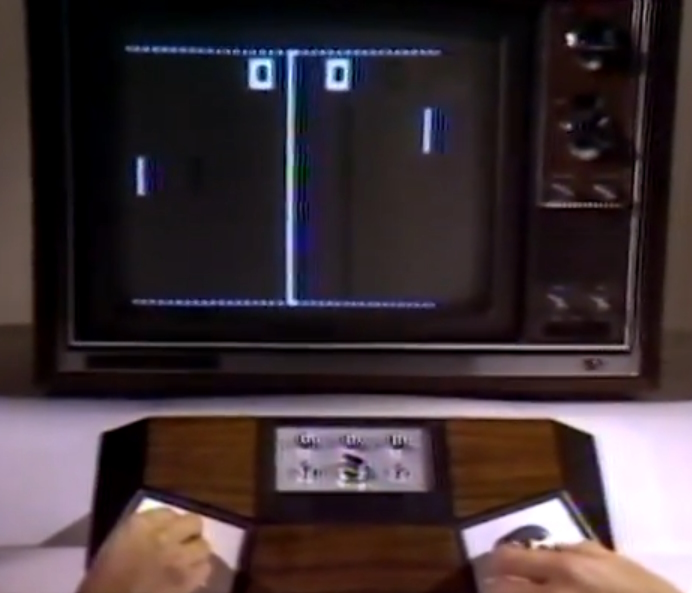
Home Pong was color, but the AY-3-8500 was mostly used in monochrome games, even though it could be “colorized”. Essentially, the AY-3-8500 output different parts of its signal (the paddles, the playfield, etc) on different pins; a colorizer chip (like GI’s own AY-3-8515) could take those and integrate different colors, while a monochrome system would just tie the outputs together. And most AY-3-8500 systems were monochrome. Most also left off the light gun, like the Woolco TV Fun Game above, making them a four-game console.
So this is the state of Pong clones at the start of 1977. Almost all were monochrome (AY-3-8500 pioneer Coleco’s first color system, the Telstar Colormatic, wouldn’t arrive until Christmas that year). Magnavox did have the Odyssey 500, a color system that seems unfair to Magnavox to call a Pong clone– more on that in a later post. In any case, the Odyssey series wasn’t sold on the Japanese market, as far as I know, and Epoch wouldn’t follow up the Electrotennis with the color System 10 until later that year. The average Pong was an AY-3-8500 game:
- Four games: Practice, Tennis, Hockey (sometimes called Soccer), and Squash (sometimes call Handball or Jai Alai)
- Maybe two rarely-included shooting games with a lightgun
- Almost certainly no colors

And now, our protagonist. Nintendo Co. Ltd., is a company that needs no introduction. Japan’s largest playing card company, it had begun an aggressive diversification, entering a number of markets, mostly with limited success. But by the 1970s it had seen some success in the toy market and in the electromechanical arcade game market, and seemed ripe to enter the electronic games field.
That brings us to 1977. Nintendo has entered the video game market. What have they done.
The Color TV Game 15
Nintendo released two consoles in June of 1977: the Color TV Game 6 and the Color TV Game 15, differing in the number of games, whether the controllers are on strings, and of course price: according to this commercial, ¥9,800 for the 6 and ¥15,000 for the 15. That’s a pretty good price! Electrotennis was ¥19,000 two years earlier, and lacked scoring, color, or multiple games.
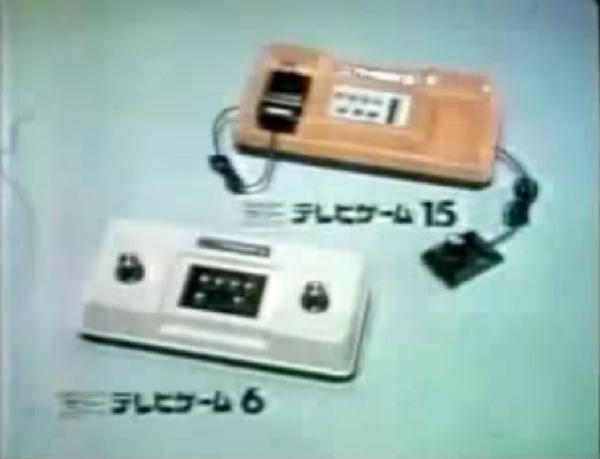
This seems to have mostly been a marketing segmentation move by Nintendo; the two systems have very similar internal hardware and the same chip, with the additional games just being not accessible by the provided controls. So I have the Color TV Game 15, and even though it came out a week later, it’s equivalent enough.
The Color TV Game 15 gets its name from fifteen games. Now, the game selector switch only has eight options; the name counts the singles and doubles variants as separate games. This actually seems fair in context; the AY-3-8500 only offered doubles in Hockey, and no option per game. (The last of the eight options, Shooting Game, is an exception, and we’ll get to it) And yes, it’s in full, glorious color, with on-screen scoring.

The internals come from a partnership with Mitsubishi. The main chip is a Mitsubishi M58815P, and the smaller Mitsubishi M51342P is just an RF modulator chip. People have done video mods, but I’m just using RF over my not-particularly-great RF2AV box.
As far as I know, the Mitsubishi M58815P was exclusive to Nintendo; however, it does have a PAL cousin, the M58813, which appeared in non-Nintendo systems. Nintendo never sold any of the Color TV Game consoles outside Japan, but the same exact chip powers both the Color TV Game 6 and Color TV Game 15. Which console has which games?
| Color TV Game 6 | Color TV Game 15 | |
|---|---|---|
| Tennis A | ✔️ | |
| Tennis B | ✔️ | ✔️ |
| Hockey A | ✔️ | |
| Hockey B | ✔️ | ✔️ |
| Volleyball A | ✔️ | |
| Volleyball B | ✔️ | ✔️ |
| Ping-Pong | ✔️ | |
| Shooting game | ✔️ |
For my money, the best game is probably Hockey Doubles. A or B; A adds some obstacles in the middle of the screen. Hockey Doubles, much like Hockey on the AY-3-8500, gives both sides two paddles, but interleaves them, so it’s almost like foosball.
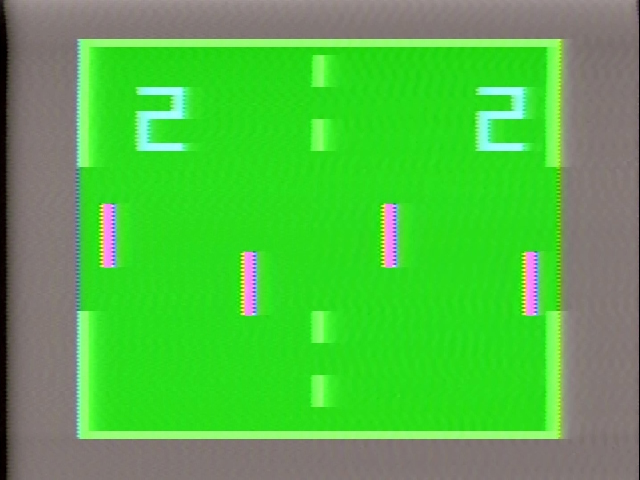
Note that an odd shortcoming here of the Color TV Game: despite being color, no effort is made to distinguish the two paddles for each player. Of course, there’s no horizontal movement, so it’s never actually ambiguous whose side is which. Still, if you have color, why not use it?
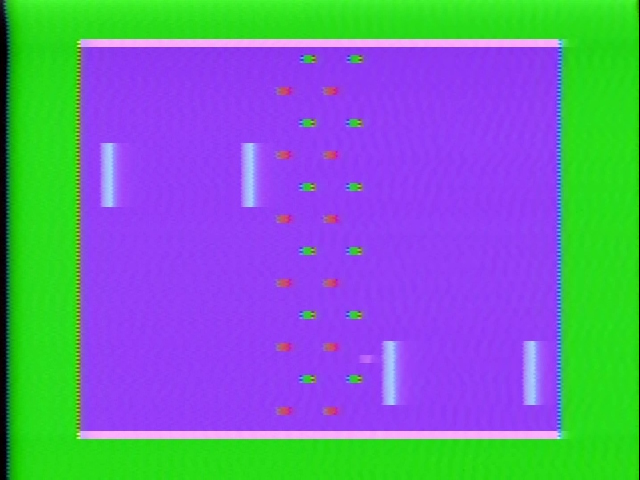
Tennis A, Volleyball A, and Volleyball B are all basically just “Pong with stuff in the middle”, which behaves slightly different based off of game mode. Tennis B is your classic Pong-a-like. Doubles for all of these give each player two paddles on their respective side. There’s no equivalent to the AY-3-8500 Squash or Practice modes.

Ping Pong is probably the most unique pong-a-like on this console, but more unique from a conceptual standing than an actual fun game mode. Essentially you have a side view, but your paddles move as usual; you can, however, get the ball to arc over the net. It’s a bit confusing perspective-wise, really, but I’ve not seen any other Pong game like it.
And then there’s Shooting Game. No really, this is a shooting game.

It’s pretty surprising to me that this isn’t a lightgun game; Nintendo, after all, were probably one of the best in the world at home lightgun games, and had made the lightgun for the original Magnavox Odyssey. But I’m not sure if Nintendo actually had very much involvement in the chip; it seems like they were mostly acting the same way as General Instrument’s customers did, taking an existing chip and putting their own box on it.
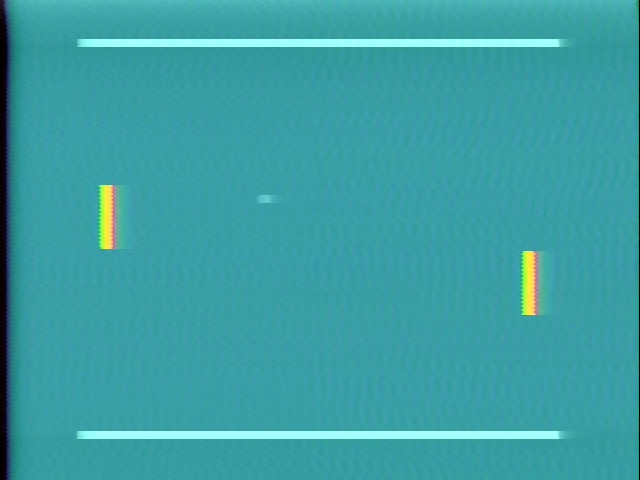
The shooting game works as follows: the right paddle blinks on and off. The left player positions their paddle, and then presses the red button on the console. They must hit the second player’s paddle while it’s solid to score a point. The left number is the number of points scored, the right the number of attempts made– note, however, that if you switch modes mid-game, your score holds over, even though it means something different here.

The Color TV Game 15 gets its odd number by counting the singles and doubles variants of the Pong-like games separately, and then adds the shooting game. But there is a shooting game doubles mode! It feels almost like it shouldn’t be accessible, though.
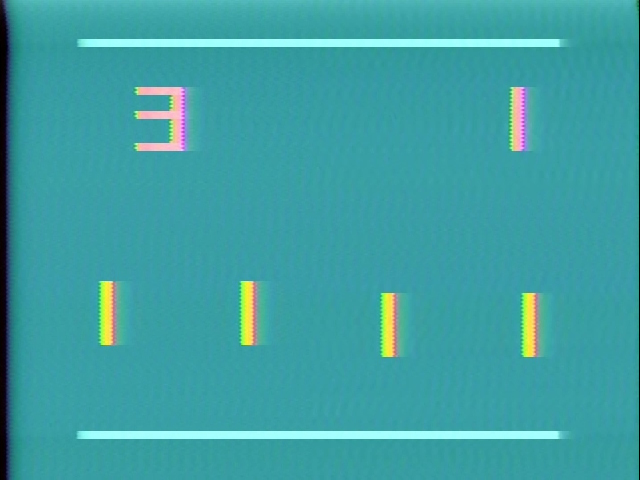
You have two paddles on each side. Only the farthest to the right paddle blinks, though, and the bullet is fired from player 1’s leftmost paddle. It passes through player 1’s second paddle (which therefore does nothing in this game mode) and hitting either the flashing paddle or the always-opaque paddle gives player 1 a point, so it’s basically easy mode. I can see why they didn’t count this as its own game.
But why is it bad?
So everything I described is basically a pretty normal, competent, Pong clone of its time. Digital on-screen scoring, color graphics, paddles on a cable, and a large number of games make it stand out; sure, its games are arguably not as varied as the AY-3-8500 games, but there’s more of them; and yes, the shooting game is just weird. Still, a pretty solid console at a good price. So what’s the catch?

The catch is those paddles. So, in the 1970s, controls for Pong games was pretty simple: you used a potentiometer. Pong did it. The Odyssey did it before them. All the AY-3-8500 games did it. Even the Apple ][ came with potentiometer-based paddles in 1977. I talk about this a bit in the Megumi Rescue post; the potentiometer has some clear characterstics that make it great in this role:
- A potentiometer has a maximum and minimum value. They can’t spin indefinitely by the very nature of how they’re constructed, and each position of the pot maps to a point on screen.
- You can move a potentiometer at varied speeds, and your character will move at varied speeds. This is an analog controller, not a digital left and right one. This is exactly what makes it so good for Pong-style games.
I’d go a step further and say the potentiometer is what makes a simple Pong game fun. It’s a basic electrical component that, when it becomes a game control, gives you near-perfect control over your paddle’s position. So let’s crack open the Color TV Game 15’s controller.
Sure, the controllers look like they have potentiometers. But any big fan of potentiometer control should be shocked when they hit reset on the Color TV Game 15:

The paddles snap back to the center. Remember, a potentiometer reads a physical value in the physical world– it can’t “snap back”, unless you hook it up to a motor to spin it into place, which Nintendo and Mitsubishi obviously didn’t do. (Though that would’ve been cool) So this isn’t a potentiometer.
Now, this would be fine if, like Megumi Rescue, they had used a quadrature encoder, also known as a “spinner”. Those definitely existed in 1977; the contemporary Atari 2600 game Indy 500 made use of them to provide analog potentiometer-like control accuracy with infinite spin. But Nintendo-Mitsubishi didn’t do that either.
The Mitsumi switch inside this controller is just that: a three-position switch. You can spin it indefinitely, but it’s sending a digital signal on its wires; connecting one side or the other, or neither if it’s not actively being moved. It also feels terrible and mushy, but that might be because it’s old, so I’ll give it a pass there.
What I won’t give it a pass on is, the paddle speed is not controllable by the user, and the position can not change as fast as a potentiometer. You lose that fine control the potentiometer gives you. And that’s what makes the Color TV Game 6 & 15 the worst Pong clones. They broke the formula. It’s like playing Arkanoid with the NES controller, but at least Arkanoid has other features to distract you; this just has Pong with stuff in the middle.
See that video? That’s how fast the paddle can move. It’s not slow, but it’s slower than you can with a potentiometer.
Well…
The Nintendo Famicom at launch had square squishy buttons on the controller, and an unknown problem with the chipset. Nintendo recalled these early models; unless you seek them out, you’ll only see ones with hard round buttons. As far as I know, Nintendo didn’t recall the Color TV Game, but they did fix the problem. Let’s look at the bottom of my Color TV Game 15.
Pretty much every Nintendo game console ever released has had a three letter identifier code. The Switch, HAC, likely for “Handheld And Console”. The GameCube, DOL for its codename Dolphin. The Famicom was HVC, for Home Video Computer, while the NES had just, well, NES. And it all started here: CTG, Color TV Game.
But that’s not important. What’s important is the part after the CTG, the 15S. The launch models of the Color TV Game were the CTG-6S and CTG-15S; but the fact that I said launch models implies there was a follow-up. And there was; the CTG-15V, which changed the color to an orange red. Did they fix anything else? Well, I don’t have a CTG-15V. But I do have a CTG-6V.
The CTG-6V switches the color from the almost beige light orange of the CTG-6S to the more vibrant color from the 16S. It also adds an external power supply option, which the CTG-15S had (a Famicom power supply works, but not an NES one) but the the CTG-6S lacked. And even before you turn it on, you can tell by feel, it’s a potentiometer-based system now. The paddles have stops.
Let’s crack it open and take a look. The Color TV Game 6 and 15 are held together with standard cross-head screws, though I’m not sure if they’re Japanese-standard or Philips (a subtle difference); no Gamebits here. Be careful though; on the CTG-6, there’s some screws underneath the battery cover, which isn’t the case on the CTG-15.
That’s definitely a potentiometer. And that Mitsubishi M58816P chip is an updated model that can take advantage of it. That 7714 looks like a timecode that would imply the 14th week of 1977; that would’ve been before the June launch of the Color TV Game and imply that this fix would’ve been in the works from day 1; but the older chip has a 751R number, so I’m not sure it’s actually that.
And with a potentiometer, the paddle can move fast. It looks practically like a glitch here as I quickly move from top to bottom. (That video quality is really awful; maybe I should look into a proper video mod after all)
In theory, it should be possible to wire in additional switches to this chip and allow access to the games that are missing on the Color TV Game 6; I might do that eventually just to get the shooting game; I’m curious if it also allows the weird doubles mode, or if Mitsubishi blocked that.
It’s an interesting thing to look at from 2023, though. The V-series are definitely the better Pong clones; but, uh, are you looking for a Pong clone in 2023? Or are you looking for a unique bit of Nintendo history? As the only company to have made Pong clones and to still be making consoles, they’re clearly doing something right, even if their first console did something wrong.
And finally, a PSA
Let’s take one last look at my Color TV Game 15. Do you see this mark across the top?
Consoles with built-in RF cables, like the Color TV Game 6, often have scars like this, and it seems particularly common on the Nintendo consoles. This is because the RF cable contains plasticizers to make it more flexible; the problem is, people often wrap cables around the console for convenient storage. This is fine for the short term, but if they’ve been in the closet for almost fifty years, well, you get burns like this or even worse. Be careful how you store these!
A series on: Pong consoles
Game consoles that do only one thing. Do they do it well? Eh, debatable.
- First is the Worst: Nintendo's Color TV Game 6 & 15 — Nintendo's take on the Pong console. Surprisingly not great; should they just give up on this whole console thing?
- The Bare Minimum Video Game: The Odyssey 100 — Calling the Magnavox Odyssey 100 a Pong console may be a violation of court order, so be careful-- this hardware's origins predate Pong itself.
- Composite Mod from Scratch: Atari's Pong Sports IV — People make a lot of allegations about life at Atari in the 1970s, but one thing is clear: their Pong consoles sure are colorful. Psychedelic?
- The Last of the First: The Magnavox Odyssey 500 — Ending the Pong console series with a look at the very last console based on the original Magnavox Odyssey. Did you get actual pixel graphics in my Pong?
- The Epoch System 10: The Pong to End All Pongs — One more Pong console to round out 2024. The Epoch System 10 was Epoch's first time making a console with their own R&D, and led directly to their Cassette Vision console. Is it worth the time?

